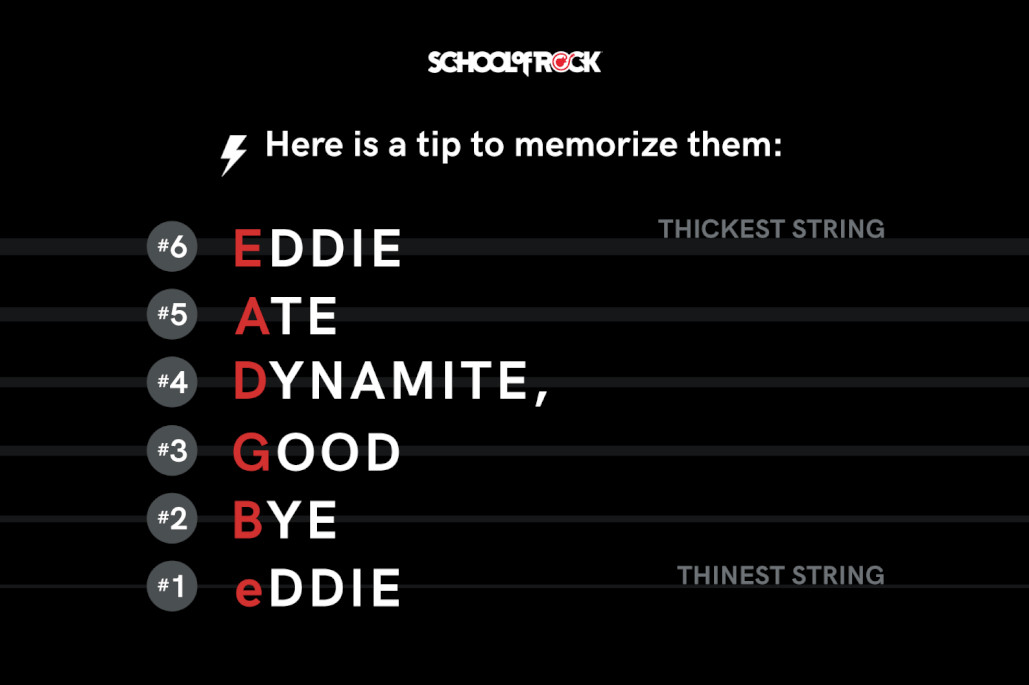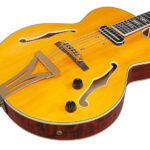Learning to tune your guitar is a fundamental skill that every guitarist must master right from the start. An out-of-tune guitar simply won’t produce the sounds you’re aiming for, making practice frustrating and less rewarding. This guide will walk you through the essential steps of How Do You Tune A Guitar, whether you’re using an electronic tuner or relying on your ear. We’ll cover identifying guitar string notes and provide tips to keep your instrument sounding its best for longer. Tuning up regularly is key to enjoyable practice and musical progress.
Understanding Guitar Tuning Basics
Guitar tuning is all about adjusting the tension of the strings to achieve the correct pitches. This adjustment is made using the tuning pegs located on the guitar’s headstock. Turning these pegs is how you control the pitch of each string. Remember this simple rule: tightening a string raises its pitch, making it sound sharper, while loosening it lowers the pitch, making it flatter.
How Often Should You Tune Your Guitar?
Ideally, you should tune your guitar every single time you pick it up to play. Don’t expect your guitar to hold its tuning perfectly between sessions. Playing itself, especially techniques like string bending or extended playing times, can cause a guitar to drift out of tune. It’s a good habit to periodically check your guitar tuning even during your practice sessions. If a chord sounds off, even when you’re confident in your finger placement, it’s a strong indication that your guitar needs retuning.
 Guitar headstock with tuning pegs
Guitar headstock with tuning pegs
Tuning Your Guitar: Methods for Beginners
Modern technology has made guitar tuning incredibly accessible. Electronic tuners offer a fast and precise way to get in tune. Alternatively, you can develop your ear by using a reference note and tuning by ear, a valuable skill for any musician.
Tuning a Guitar with a Chromatic or Pitch Tuner
Clip-on electronic tuners have transformed the tuning process for guitarists. Unlike older electric tuners that required plugging in, these devices clip directly onto your guitar’s headstock. They detect string vibrations and clearly indicate whether a string is flat (too low), sharp (too high), or perfectly in tune. They are versatile, working equally well for both acoustic and electric guitars. Clip-on tuners are affordable, accurate, and remarkably user-friendly, making them an excellent tool for tuning your guitar. Many beginner guitar amplifiers also come equipped with built-in tuners, adding to their convenience.
Tuning Your Guitar Without a Tuner
If you’re wondering how to tune a guitar without a tuner, know that it’s a common situation many musicians face. Tuning by ear is a useful skill, especially when you’re on the go or don’t have a tuner handy.
Fortunately, smartphone apps offer a readily available solution. Numerous tuner apps are available, many of them free. These apps utilize your device’s microphone to listen to the pitch of your guitar strings. As you adjust the tuning pegs, the app’s display provides visual feedback, showing you when the string reaches the correct pitch.
Another method for tuning without a dedicated tuner is to use a reference pitch. This could be from a piano, another guitar that you know is in tune, or even a tuning fork or pitch pipe.
Tuning by ear to a reference pitch requires more practice and a developing ear. Start by playing the reference note and then try to match that pitch on the corresponding string of your guitar. Listen carefully to the relationship between the two notes. Adjust your guitar string’s tuning peg until it sounds identical to the reference pitch. Once you have one string correctly tuned, you can then tune the remaining strings relative to that first tuned string. This involves playing a fretted note on a lower-pitched string and matching the open string above it to that fretted note.
Finding Guitar String Names & Notes: EADgbe
A standard guitar has 6 strings. When held in playing position, the strings are numbered from 1 to 6, with the 1st string being the thinnest and highest in pitch, and the 6th string being the thickest and lowest in pitch. Reading from the thickest (6th string) to the thinnest (1st string), the standard guitar string notes are E, A, D, G, B, E.
 Guitar strings labeled with notes EADgbe
Guitar strings labeled with notes EADgbe
To easily remember these guitar string names, use a mnemonic phrase. Popular ones include: Eddie Ate Dynamite, Good Bye Eddie, or Elephants And Donkeys Grow Big Ears. Choose the saying that resonates best with you to help recall the standard tuning sequence.
 Mnemonic for guitar string names: Eddie Ate Dynamite, Good Bye Eddie
Mnemonic for guitar string names: Eddie Ate Dynamite, Good Bye Eddie
Beyond standard tuning, there’s a world of alternate guitar tunings that guitarists explore for different sounds and playing styles. However, mastering standard tuning is the crucial first step for any beginner.
Tuning Each Guitar String: Step-by-Step
Let’s go through the process of tuning each string using the relationship between them. This method is essential for tuning by ear and also helps you understand how the strings relate to each other even when using a tuner. We will start by assuming you have a reference pitch for the low E string (6th string). If you are using a tuner, you can simply tune each string to its indicated note.
Tuning Your Low E String (6th String)
If you have a reference pitch, such as from a tuning fork, piano, or another tuned guitar, begin by tuning your low E string (the thickest string) to this reference. If you don’t have a reference, you can use the method below to tune it relative to another string once your A string is tuned.
Tuning Tip for the 6th String (Low E)
Tune the low E string to your reference pitch. Adjust the tuning peg, tightening or loosening the string, until the guitar note matches the reference note exactly.
Tuning Your A String (5th String)
Next, we’ll tune the A string (5th string) relative to the now-tuned E string. Fret the E string at the 5th fret. This fretted note is an A note. Play this 5th fret E string note and then play your open A string. Adjust the tuning peg of the A string until the open A string pitch matches the pitch of the 5th fret E string note.
Tuning Tip for the 5th String (A)
Play the 5th fret on your low E (6th) string. Tune your open A (5th) string to match the pitch of this fretted note.
Tuning Your D String (4th String)
Now, tune the D string (4th string) using the A string as your reference. Fret the A string at the 5th fret. This fretted note is a D note. Play this 5th fret A string note and then play your open D string. Adjust the tuning peg of the D string until the open D string pitch matches the pitch of the 5th fret A string note.
Tuning Tip for the 4th String (D)
Play the 5th fret on your A (5th) string. Tune your open D (4th) string to match the pitch of this fretted note.
Tuning Your G String (3rd String)
For the G string (3rd string), we continue the same process. Fret the D string at the 5th fret. This fretted note is a G note. Play this 5th fret D string note and then play your open G string. Adjust the tuning peg of the G string until the open G string pitch matches the pitch of the 5th fret D string note.
Tuning Tip for the 3rd String (G)
Play the 5th fret on your D (4th) string. Tune your open G (3rd) string to match the pitch of this fretted note.
Tuning Your B String (2nd String)
The tuning of the B string (2nd string) is slightly different. Instead of the 5th fret, we use the 4th fret of the G string. Fret the G string at the 4th fret. This fretted note is a B note. Play this 4th fret G string note and then play your open B string. Adjust the tuning peg of the B string until the open B string pitch matches the pitch of the 4th fret G string note.
Tuning Tip for the 2nd String (B)
Play the 4th fret on your G (3rd) string. Tune your open B (2nd) string to match the pitch of this fretted note.
Tuning Your High E String (1st String)
Finally, tune the high E string (1st string). Fret the B string at the 5th fret. This fretted note is a high E note. Play this 5th fret B string note and then play your open high E string. Adjust the tuning peg of the high E string until the open high E string pitch matches the pitch of the 5th fret B string note.
Tuning Tip for the 1st String (High E)
Play the 5th fret on your B (2nd) string. Tune your open high E (1st) string to match the pitch of this fretted note.
Once you are comfortable with tuning each guitar string note, you’ll be ready to explore more advanced guitar skills, such as reading guitar tabs and learning your favorite songs.
 School of Rock Summer Camps
School of Rock Summer Camps
Guitar Summer Camps
Consider joining a guitar summer camp to accelerate your learning! School of Rock music camps offer immersive programs where students learn not only how to tune a guitar but also how to play songs and perform as part of a band. Camps cover a range of topics from songwriting to developing stage presence for guitarists, catering to all skill levels.
Explore Summer Camps!
How to Keep Your Guitar in Tune Longer
After you’ve achieved perfect guitar tuning, there are practical steps you can take to maintain it for longer periods.
- Change Your Strings Regularly: Guitar strings lose their elasticity and become less stable over time. When your strings start to sound dull or frequently go out of tune, it’s time for a fresh set.
- Stretch Your Guitar Strings: New guitar strings need to be stretched to stabilize their tuning. After installing new strings, gently stretch them by pulling them away from the fretboard and playing. Be careful not to pull too hard, which could break them.
- Care for Your Guitar: Environmental factors significantly impact tuning stability. Avoid exposing your guitar to extreme changes in temperature or humidity. After each playing session, wipe down the strings with a clean, soft cloth and store your guitar in its case or gig bag.
By using an electronic tuner or tuning by ear and following these maintenance tips, you’ll ensure your guitar stays in tune, making your practice sessions more enjoyable and productive.
Thinking about getting a new guitar? Check out our Guitar Buying Guide for helpful advice!

